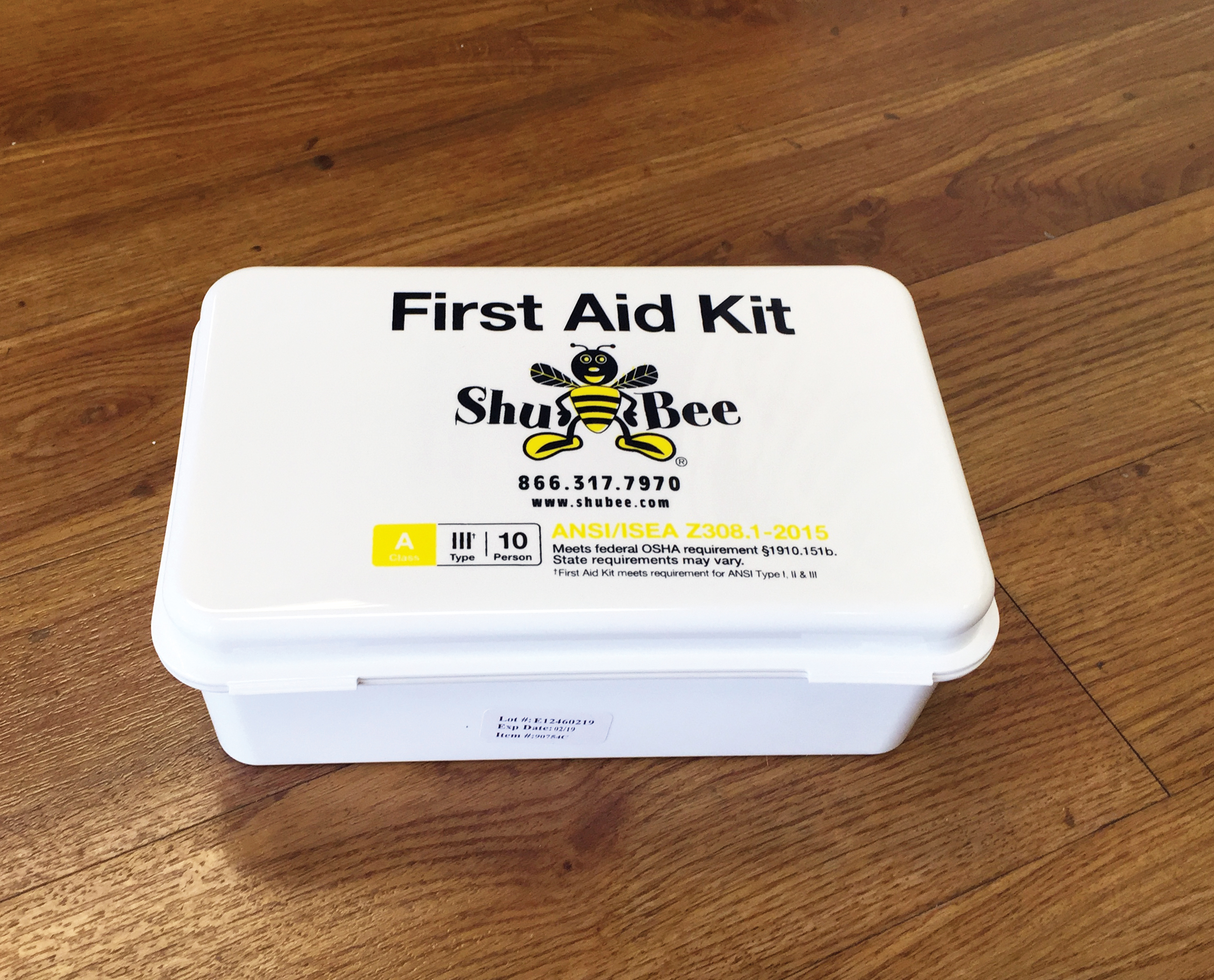
Lisa Duke
Contributing Writer
ShuBee®
There are many rules and regulations you need to be aware of as a business owner. I’m sure most of you have heard of OSHA, the Occupational Safety and Health Administration, and know how hard it is to keep up with their rules and regulations. If you’re not familiar with OSHA, they are the main federal agency responsible for the enforcement of safety and health legislation in the workplace. A big change in OSHA laws last year was with First Aid Kit requirements. Make sure your company is in compliance to protect your employees on the job and avoid major fines.
While OSHA does not provide mandatory requirements for the contents of first aid kits they do define the requirement of first aid supplies on a worksite and reference ANSI (American National Standards Institute) for the specifications and minimum kit requirements.
In June of 2015 ANSI adopted new standards for first aid kits. These standards take effect June 17, 2016, one year from their date of adoption. Companies will be given until December 31, 2016 to upgrade their first aid kits to meet the new criteria.
Kits which meet the ANSI 2015 standard will have more products and in some cases, larger quantities of products already required under the old ANSI 2009 standard.
Kits will now be classed as A or B.
Class A kits are designed to deal with the most common types of workplace injuries.
Class B kits are designed with a broader range and quantity of supplies to deal with injuries in more complex or high-risk environments.
Kits have also been categorized into 4 types as follows:
TYPE I – These are kits designed for indoor use only and should be mounted in a fixed position. An example of this would be in an office environment.
TYPE II – These kits are also for indoor use but should be equipped with a handle to make them portable so they can be easily taken to the site of the incident.
TYPE III – These kits are designed for indoor/outdoor use and can be mounted or portable. They should have a seal to protect the contents from damage by minor environmental factors.
TYPE IV – These kits are for outdoor use where contents must be protected from harsh environmental conditions and rough handling.
When deciding the class and type of kit needed, employers should consider the risks that are present and the potential severity and likelihood of an incident. Based on the number of employees and the potential remoteness to emergency services, employers should also consider whether multiple first aid kits are needed. No one wants to see an employee suffer injury, but if an incident does happen, make sure you are prepared and compliant.

